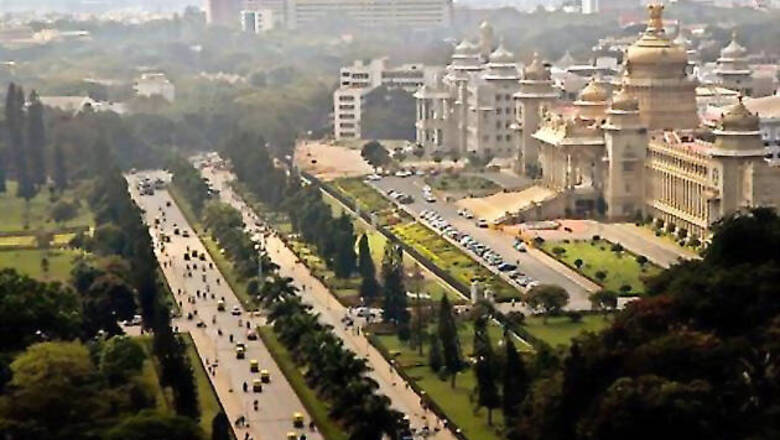
views
BANGALORE: Over the years, important landmarks in Bangalore have been renamed much to the nonchalance of city-dwellers. The pattern remains the same; an old colony or park named in honour of an important British officer now bears the name of a deserving Indian who made the country or the state proud. While the act is appreciable, it does not hide the fact that the British had a major influence on the way we lived which has continued to this day. They did make our lives better and no amount of name-changing can take away the due that needs to be given to them.The iconic Cubbon Park has been one of the major contributors to Bangalore’s now-questionable ‘Garden City’ tag. Misty morning strolls through Cubbon Park, the burst of colour from the flowering trees, the sweet call of the birds and the beckoning benches were the stuff that dreams were made of for those who wished to settle in the ‘Pensioners’ Paradise’. Even now Cubbon Park is the favourable family picnic spot, rendezvous for lovers, meeting place for groups and even an area of protest due to its proximity to the Vidhana Soudha. Cubbon Park was built in 1870 by the then acting Commissioner of Mysore Sir John Meade. The vast landscape was conceived by the then Chief Engineer of the State Major General Richard Sankey. The park was initially named Meade’s Park’ in honour of John Meade and later renamed as Cubbon Park after the longest serving commissioner of the time, Sir Mark Cubbon (http://cubbon/); an honour he deserves for restructuring the government of Mysore, reforming its finances, and creating a prosperous state. Cubbon is credited with the construction of over 1,000 miles of roads, hundreds of dams and improvements in the tax and revenue systems. As per the pattern of changing names, the park was officially renamed in 1927 as ‘Sri Chamarajendra Park’ to commemorate the Silver Jubilee of Sri Krishnaraja Wodeyar’s rule in Mysore State but the name Cubbon Park has stuck.The park has around 68 varieties and 96 species with about 6,000 plants. Indigenous species such as Jackfruit, Cassia fistula, Peepal, Ashoka and exotic species such as Araucaria, Bamboo, Castanospermum australe, Grevillea robusta, Milletia, Peltophorum Schinus molle, Mahagony, Tabebuia can be seen. In addition, many ornamental and flowering trees both exotic and indigenous are found here. Grevillea robusta (silver oak), having the distinction of being the first oaks introduced to Bangalore from Australia are still found in the park.Many official and public buildings are located within and along its periphery. The High Court buildings, Indira Priyadarshini Children’s Library, City Central Library, Government Museum, Art Gallery, Aquarium, YMCA, Yuvanika — the State Youth Centre, Century Club, Press Club, Bal Bhavan are located in the park. Many roads run through the park connecting various places. The greenery is a welcome sight for traffic-sore eyes. The park is also famous for the statues of Queen Victoria installed in 1906 and King Edward VII statue installed in 1919. There are statues of Mark Cubbon, K Sheshadri Iyer and of Sri Chamarajendra Wodeyar also installed.A famous tourist spot, a hangout and a green blanket to the administrative buildings of Bangalore, Cubbon Park and Bangalore are synonymous. Last year there was a proposal to build mega parks on the lines of Cubbon Park in four areas around the city. It remains to be seen how they turn out because come what may nothing can match the grandeur of Cubbon Park, its history and the love and affection its garners.




















Comments
0 comment